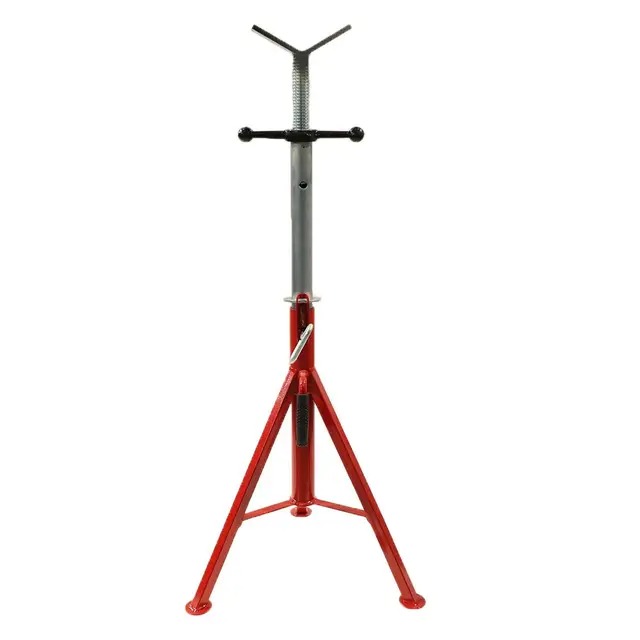Views: 172 Author: Site Editor Publish Time: 2025-06-01 Origin: Site








Proper maintenance and timely replacement of pipe welding tools are essential for ensuring safety, productivity, and precision in any welding project. Whether you're working in oil pipelines, HVAC systems, plumbing, or structural fabrication, pipe welding tools must operate flawlessly. But how often should these tools be maintained or replaced? This guide explores the answer in-depth and offers practical advice for welders, technicians, and facility managers alike.
Pipe welding tools encompass a wide range of equipment—welding machines, pipe clamps, beveling tools, pipe stands, cutting torches, alignment tools, and more. These tools are designed to withstand high heat, constant pressure, and challenging working conditions. As such, they are subject to wear and degradation over time.
Without proper upkeep, these tools can malfunction, resulting in poor weld quality, material wastage, safety hazards, or costly downtime. Maintaining optimal condition isn’t just about extending the tool's lifespan—it’s about maintaining standards of quality and operational safety.
Regular maintenance schedules depend largely on usage frequency, environmental exposure, and the type of welding tool in question. Below is a general guideline based on industry standards and expert recommendations:
| Tool Type | Maintenance Frequency | Replacement Timeline |
|---|---|---|
| Welding Machines | Monthly inspection; Quarterly deep clean | 5-7 years with proper care |
| Pipe Clamps & Aligners | Bi-monthly inspection | Every 2-3 years |
| Beveling/Cutting Tools | Weekly blade check & cleaning | 2-4 years depending on usage |
| Pipe Stands & Jacks | Monthly lubrication & tightening | 3-5 years |
| Protective Equipment | Before each use | As needed when wear is noted |
The table above gives a conservative estimate; however, heavy-duty or high-frequency operations may require shorter intervals.
Even with routine maintenance, every pipe welding tool has a finite service life. Ignoring early warning signs can lead to equipment failure and safety risks. Here are some of the most common indicators that it's time for a replacement:
If you're noticing inconsistencies in welding arcs, uneven cuts, or misalignment during pipe setup, it may be due to degraded tools. Frequent calibration errors in machines or difficulty in achieving tight pipe fits can signal internal wear that no amount of repair can fix.
When your team is spending more time troubleshooting or adjusting tools than actually welding, it’s a red flag. Productivity losses due to unreliable equipment often cost more than the price of replacement.
Tools that show cracks, severe rusting, or corrosion—especially in clamps, cutting tips, or adjustment knobs—should be removed from service immediately. These damages not only reduce accuracy but also pose safety threats.

The lifespan of any pipe welding tool isn’t fixed—it’s shaped by how the tool is treated throughout its life. Below are key factors that influence longevity:
A tool used daily on heavy-duty projects will wear out faster than one used occasionally for light repairs. Intense welding generates heat, sparks, and mechanical stress that accelerates tool fatigue.
Tools stored in damp, unprotected areas are more susceptible to corrosion and deterioration. Investing in dry, ventilated storage significantly extends the life of pipe welding tools.
A strict maintenance routine—lubrication, cleaning, inspections—ensures all components remain functional. Tools that receive preventive maintenance tend to last 30–50% longer than neglected ones.
Proper maintenance is proactive rather than reactive. Here’s a breakdown of best practices to implement in your tool care routine:
Remove slag, metal debris, and grease from tools after every session. This minimizes contamination, rust formation, and mechanical obstruction.
Check all moving parts, wiring, switches, and seals monthly. Look for signs of wear, loose parts, or frayed insulation. Replace worn components before they cause failure.
For electronic welding machines and automated tools, schedule regular calibration to maintain precision. Errors in voltage or alignment can jeopardize weld quality.
Covers and toolboxes shield tools from dust, moisture, and mechanical shocks. Keep tools organized to prevent accidental damage during storage or transport.

Here are frequently asked questions from professionals in the welding field:
Routine cleaning and inspections can be performed in-house. However, calibration, motor servicing, or electrical troubleshooting should be left to certified technicians.
Preventive maintenance is significantly cheaper than replacement or repair after a breakdown. A well-maintained tool can double its lifespan, saving money in the long run.
Refer to the manufacturer’s manual for tolerance limits. If a tool falls outside the specified parameters for safety or performance, it must be replaced or repaired.
Pipe welding tools are the backbone of professional welding work. When maintained properly and replaced when needed, they contribute to high-quality welds, safer worksites, and smoother operations. Don’t wait for breakdowns to act. Establish a maintenance log, train your staff on care procedures, and perform regular inspections.
Remember, a failing pipe welding tool doesn't just hurt your bottom line—it can endanger lives and reputations. Stay ahead with proactive care and ensure every weld you make is a strong one.